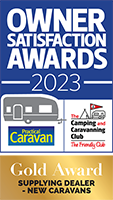Planning a motorhome trip is exciting, but it’s essential to understand which driving licence you need before setting off. Your eligibility depends on the vehicle’s Maximum Authorised Mass (MAM), the total permitted weight when fully loaded.
If your motorhome weighs up to 3,500kg, a standard Category B car licence is sufficient. For vehicles between 3,500kg and 7,500kg, a Category C1 licence is required. Many luxury or larger motorhomes fall into this bracket. If your vehicle exceeds 7,500kg, you’ll need a full Category C licence. These rules ensure that drivers can handle larger vehicles safely.
Understanding Motorhome Licence Requirements
The UK’s motorhome licence system is based on weight classifications. The primary factor is the MAM, which includes the vehicle’s own weight plus everything added to it; passengers, fuel, water, and cargo.
What Is a Motorhome?
A motorhome is a self-propelled vehicle that provides both transport and living accommodation. It may also be called a campervan, RV, or mobile home. Most motorhomes include sleeping areas, kitchenettes, toilets, and seating. They vary in size from compact vans to large, multi-room vehicles.
For licensing, the classification is based not on the empty weight but on the MAM; the total maximum weight when fully loaded.
Licence Categories and What They Cover
Different licence types allow you to drive motorhomes of varying sizes:
- Category B - A standard car licence that covers motorhomes up to 3,500kg MAM.
- Category C1 - Required for motorhomes between 3,500kg and 7,500kg. Drivers who passed their test before 1 January 1997 often have this automatically.
- Category C - Needed for vehicles over 7,500kg. This is a full HGV licence.
Drivers who gained their licence after 1 January 1997 must pass extra tests, including medical, theory, and practical exams, to obtain C1 or C entitlements.
Weight and Road Rules for Heavier Vehicles
Heavier motorhomes face different driving conditions. These include altered speed limits and restricted access to certain roads and facilities.
For vehicles over 3,500kg, speed limits are:
- 50 mph on single carriageways
- 60 mph on dual carriageways
- 70 mph on motorways
Larger vehicles may be restricted from using some bridges, tunnels, and narrow roads. Urban car parks often have height, length, or weight restrictions. It’s also important to note that driving a motorhome that exceeds your licence entitlement is illegal and could invalidate your insurance.
Types of Driving Licences for Motorhomes
Before buying or hiring a motorhome, you must ensure your licence permits you to drive it. Licence categories are based on the MAM.
Category B Licence
This standard car licence covers motorhomes weighing up to 3,500kg. It includes most small to medium models. If you passed your test after 1 January 1997, this is your upper limit. Because of this restriction, many motorhome manufacturers design models to stay within this weight range, making them accessible to the majority of drivers.
Category C1 Licence
If your motorhome weighs between 3,500kg and 7,500kg, you need a Category C1 licence. These heavier models often offer more space and luxury features.
To obtain a C1 licence, you must:
- Hold a full Category B licence
- Pass a medical examination
- Complete both a theory and practical test tailored for medium-sized vehicles
The tests ensure that drivers understand how to safely operate and control heavier vehicles, with a focus on size, weight, and road handling.
Grandfather Rights
Drivers who passed their test before 1 January 1997 were automatically granted Category C1 entitlement. This allows them to drive vehicles up to 7,500kg without additional tests. However, when these drivers turn 70, they must renew their licence and pass a medical to keep this entitlement. The medical includes vision, mobility, and general health checks.
Motorhome Weight Classes
Knowing your motorhome’s weight is crucial to determine the correct licence.
Up to 3,500kg
Most campervans and smaller motorhomes fall under this weight limit. If you passed your test after 1997, you can drive these with a standard Category B licence. Always check the MAM plate, typically located in the engine bay or driver-side doorframe.
Be aware that packing your motorhome heavily, with passengers, water, luggage, and equipment, can push it over this 3,500kg limit, which would require a C1 licence.
3,500kg to 7,500kg
Larger, more luxurious motorhomes often fall in this range and require a Category C1 licence. If your licence doesn’t already include this, you’ll need to:
- Take both theory and practical tests
- Pay training fees, usually £500-£1,000
- Complete a D4 medical form completed by a GP
The C1 licence must be renewed every five years from age 45, and annually from 65 onward.
Over 7,500kg
These are typically converted coaches or specialist expedition vehicles. Driving them requires a full Category C licence, with more advanced training and testing. Courses cost between £1,500-£2,500. Insurance premiums are also higher for these large vehicles, and drivers must demonstrate strong awareness of their size, turning circle, and stopping distance.
Age and Medical Requirements
Driving heavier motorhomes comes with stricter age and health requirements.
Minimum Age to Drive
- 17 years old for vehicles up to 3.5 tonnes
- 18 years old for vehicles between 3.5 and 7.5 tonnes (C1)
- 21 years old for vehicles over 7.5 tonnes (C)
Some insurers may require drivers to be 21 or even 25 regardless of licence entitlement.
Medical Fitness Standards
For motorhomes over 3.5 tonnes, you’ll need a D4 medical exam conducted by a doctor. This checks for conditions that could impair driving, including:
- Eyesight (acuity and peripheral vision)
- Physical mobility and coordination
- Heart and neurological health
- Diabetes (if applicable)
This exam must be renewed every 5 years from age 45 and every year after 65. Drivers licensed before 1997 may have exemptions but should still regularly self-assess their fitness.
Driving a Motorhome Abroad
When driving your motorhome in Europe, you’ll need proper documents and knowledge of local laws.
Driving Licence Recognition
Most EU countries accept UK licences, but an International Driving Permit (IDP) may be required in non-English-speaking regions. The IDP is a translation of your licence and must be carried alongside your original UK licence. It’s valid for 12 months and available from Post Office branches.
Documents You’ll Need
Before travelling abroad in your motorhome, carry:
- Valid passport
- UK driving licence
- Vehicle insurance certificate
- V5C registration document
- IDP (if required)
Country-Specific Laws
Each country may impose unique rules. For example:
- France - You must carry reflective jackets for all passengers, a warning triangle, a breathalyser kit, and headlamp deflectors.
- Italy and Spain - Watch for ZTL (Limited Traffic Zones) in cities. These may issue automatic fines.
- Germany - Some cities have environmental zones that require emission stickers.
Check the latest travel regulations, especially post-Brexit, for rules on Green Cards and GB stickers.
How to Apply for a Motorhome Licence
Upgrading your licence depends on the weight of your motorhome. If it weighs under 3,500kg, no upgrade is needed. For heavier models:
Application Steps for C1 Licence
- Complete the DVLA’s D2 application form
- Get a medical exam and submit a D4 form
- Ensure you meet all health criteria
- Wait 3-4 weeks for processing
Training and Testing
C1 training includes classroom and on-road instruction. Courses usually last 2-5 days. Training covers:
- Vehicle safety checks
- Manoeuvring skills
- Proper loading
- Spatial awareness
- Highway Code knowledge for larger vehicles
Theory tests include multiple-choice questions and hazard perception. The practical exam tests real-world driving performance. Costs for training and testing typically range from £400 to £1,000.
Penalties for Driving Without the Right Licence
Driving a motorhome without the appropriate licence is illegal and carries serious consequences:
- Fines - Often several hundred pounds
- Points - 3 to 6 points on your licence
- Disqualification - Temporary or permanent
- Criminal charges - For repeated or serious violations
Additionally, insurance is void if you drive without the correct licence. This could leave you personally liable for damage or injury. The DVLA and police regularly check licence categories during roadside stops.
Motorhome Insurance Considerations
Your licence type and vehicle weight affect your insurance options and costs.
Under 3.5 Tonnes
Standard policies apply, with lower premiums and wider availability. These vehicles are the easiest to insure.
Over 3.5 Tonnes
Heavier vehicles mean higher insurance costs due to greater risks. Premiums rise further for motorhomes over 7.5 tonnes.
Key Factors Affecting Insurance
Insurers calculate premiums based on:
- Vehicle weight and size
- Driver’s licence type and experience
- Where the vehicle is stored
- How much and how often it’s driven
- Security features
Declare any modifications, like solar panels or awnings, to ensure proper coverage. Newer vehicles may qualify for better coverage but often carry higher premiums.
Upgrading Your Licence for Larger Motorhomes
If your motorhome is over 3,500kg, you’ll likely need to upgrade your licence.
Steps to Upgrade
- Pass a medical exam
- Take the C1 theory test
- Complete a practical test in a C1-class vehicle
Those who passed their test before 1 January 1997 may already have the C1 entitlement; check your licence to confirm. Costs vary depending on the medical, training, and testing involved.
Wrapping Up
The licence you need to drive a motorhome in the UK depends on its MAM:
- Up to 3,500kg - Category B
- 3,500-7,500kg - Category C1
- Over 7,500kg - Category C
Always check your vehicle’s MAM and match it to your licence category. Driving outside your entitlement is illegal and could invalidate your insurance. If your motorhome exceeds 3,500kg, upgrading your licence involves testing and may include a medical assessment depending on your age and health.



 Spidersnet
Spidersnet